Related Research Articles
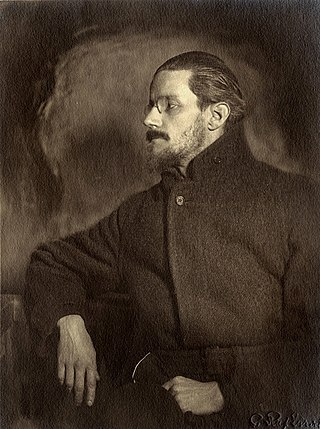
James Augustine Aloysius Joyce was an Irish novelist, poet, and literary critic. He contributed to the modernist avant-garde movement and is regarded as one of the most influential and important writers of the 20th century. Joyce's novel Ulysses (1922) is a landmark in which the episodes of Homer's Odyssey are paralleled in a variety of literary styles, particularly stream of consciousness. Other well-known works are the short-story collection Dubliners (1914), and the novels A Portrait of the Artist as a Young Man (1916) and Finnegans Wake (1939). His other writings include three books of poetry, a play, letters, and occasional journalism.
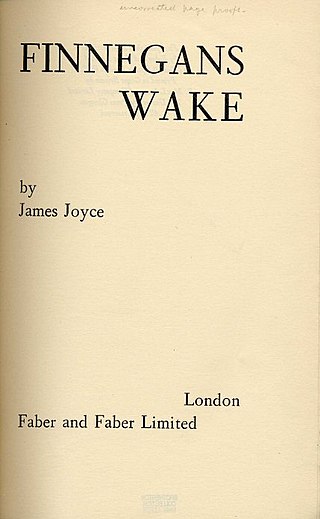
Finnegans Wake is a novel by Irish writer James Joyce. It is known for its experimental style and its reputation as one of the most difficult works of fiction in the Western canon. Written over a period of seventeen years and published in 1939, the novel was Joyce's final work. It is written in a largely idiosyncratic language that blends standard English with neologisms, portmanteau words, Irish mannerisms, and puns in multiple languages. It has been categorized as "a work of fiction which combines a body of fables [...] with the work of analysis and deconstruction"; many critics believe the technique was Joyce's attempt to recreate the experience of dreams and hypnagogia, reproducing the way in which concepts, memories, people, and places become amalgamated in dreaming. It has also been regarded as an attempt by Joyce to combine many of his prior aesthetic ideas, with references to other works and outside ideas woven into the text. Although critics have described it as unintelligible, Joyce asserted that every syllable could be justified. Due to its linguistic experiments, stream of consciousness writing style, literary allusions, free dream associations, and abandonment of narrative conventions, Finnegans Wake remains largely unread by the general public.
"Finnegan's Wake" is an Irish-American comic ballad, first published in New York in 1864. Various 19th-century variety theatre performers, including Dan Bryant of Bryant's Minstrels, claimed authorship but a definitive account of the song's origin has not been established. An earlier popular song, John Brougham's "A Fine Ould Irish Gintleman," also included a verse in which an apparently dead alcoholic was revived by the power of whiskey.

William Percy French was an Irish songwriter, author, poet, entertainer and painter.
"Oh, My Darling Clementine" is a traditional American, sometime comic, Western folk ballad in trochaic meter usually credited to Percy Montross (1884), although it is sometimes credited to Barker Bradford.

"The Bonnie Blue Flag", also known as "We Are a Band of Brothers", is an 1861 marching song associated with the Confederate States of America. The words were written by the entertainer Harry McCarthy, with the melody taken from the song "The Irish Jaunting Car". The song's title refers to the unofficial first flag of the Confederacy, the Bonnie Blue Flag. The left flag on the sheet-music is the Bonnie Blue Flag.
"For He's a Jolly Good Fellow" is a popular song that is sung to congratulate a person on a significant event, such as a promotion, a birthday, a wedding, a retirement, a wedding anniversary, the birth of a child, or the winning of a championship sporting event. The melody originates from the French song "Malbrough s'en va-t-en guerre".
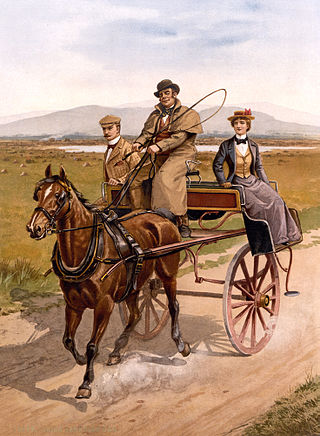
A jaunting car is a light two-wheeled carriage for a single horse, with a seat in front for the driver. In its most common form with seats for two or four persons placed back to back, with the foot-boards projecting over the wheels and the typical conveyance for persons in Ireland at one time. Also with passenger seats facing each other.
"Over the Hills and Far Away" is a traditional British song, dating back to at least the late 17th century. One version was published in Thomas D'Urfey's Wit and Mirth, or Pills to Purge Melancholy; a very different one appeared in George Farquhar's 1706 play The Recruiting Officer. A version also appears in John Gay's The Beggar's Opera of 1728.
"The Wild Colonial Boy" is a traditional anonymously penned Irish-Australian folk ballad which tells the story of a bushranger in early colonial Australia who dies during a gunfight with local police. Versions of the ballad give different names for the bushranger involved: some based on real individuals and some apparently fictional. A common theme is romanticisation of the bushranger's battle against colonial authority. According to a report in The Argus in November 1880, Ann Jones, the innkeeper of the Glenrowan Hotel, had asked her son to sing the ballad when the Kelly gang were at her hotel in June that year.
"One More Drink for the Four of Us" is a traditional drinking and marching song. It became popular during the First World War, and has been widely repurposed for other marches, college bands, and social clubs. It is referenced in Ulysses and Finnegans Wake.
"The Wind That Shakes the Barley" is an Irish ballad written by Robert Dwyer Joyce (1836–1883), a Limerick-born poet and professor of English literature. The song is written from the perspective of a doomed young Wexford rebel who is about to sacrifice his relationship with his loved one and plunge into the cauldron of violence associated with the 1798 rebellion in Ireland. The references to barley in the song derive from the fact that the rebels frequently carried barley or oats in their pockets as provisions for when on the march. This gave rise to the post-rebellion phenomenon of barley growing and marking the "croppy-holes," unmarked mass graves into which rebel casualties were thrown. To many Irish nationalists, these "croppy-holes" symbolised the regenerative nature of resistance to British rule in Ireland. Barley growing every spring was said by nationalist authors to symbolize continuous Irish resistance to British rule, particularly in nationalist literature and poetry written about the rebellion.
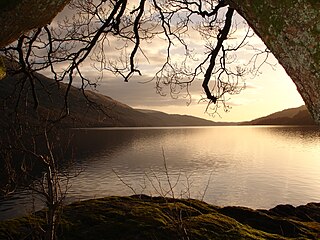
"The Bonnie Banks o' Loch Lomond", or "Loch Lomond" for short, is a Scottish song. The song prominently features Loch Lomond, the largest Scottish loch, located between the council areas of West Dunbartonshire, Stirling and Argyll and Bute. In Scots, "bonnie" means "attractive", "beloved", or "dear".
Óró, sé do bheatha abhaile or Óró, sé do bheatha 'bhaile is a traditional Irish song, that came to be known as a rebel song in the early twentieth century. Óró is a cheer, while sé do bheatha 'bhaile means "welcome home".
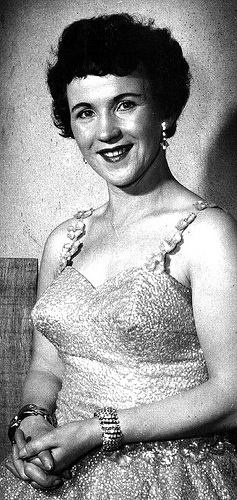
Bridget "Bridie" Gallagher was an Irish singer, affectionately known as "The Girl from Donegal". She has been described as "Ireland's first international pop star".
The Ballad of Persse O'Reilly is a song in book one of James Joyce's novel Finnegans Wake, where the protagonist H.C.E. has been brought low by a rumour which begins to spread across Dublin, apparently concerning a sexual trespass involving two girls in Phoenix Park; however details of HCE's transgression change with each retelling of events. Most of chapters 1.2 through 1.4 follow the progress of this rumour, starting with HCE's encounter with "a cad with a pipe." The cad asks the time, but HCE misunderstands it as either an accusation or a proposition, and incriminates himself by denying rumours the cad has not yet heard.

20 Greatest Hits is an album by The Dubliners, re-released on 7 January 2013. The album charted at No.100 in the Irish Album Charts.
Waywords and Meansigns: Recreating Finnegans Wake [in its whole wholume] is an international project setting James Joyce's novel Finnegans Wake to music. Waywords and Meansigns has released two editions of audio, each offering an unabridged musical adaptation of Joyce's book. A third edition, featuring over 100 artists and performing much shorter passages of the book, debuted May 4, 2017.
Emily Lucy de Burgh Daly was an Irish nurse, writer, and traveller.
References
- ↑ "Vousden One-Name Study". www.vousden.name. Retrieved 2021-06-22.
- 1 2 Lowry, Bernadette (December 2021). Sounds of Manymirth on the Night's Ear Ringing: Percy French (1854-1920) His Jarvey Years and Joyce's Haunted Inkbottle. Dublin: Carnen Eblana Productions Carmeneblana.com. pp. 19–20. ISBN 9-781914-488412.
- ↑ "The Bonnie Blue Flag". voices.pitt.edu. Retrieved 2021-06-22.
- ↑ "Civil War Music: The Bonnie Blue Flag". American Battlefield Trust. Retrieved 2021-06-22.
- ↑ Kenedy, Patrick John (1898). The Universal Irish Song Book: A Complete Collection of the Songs and Ballads of Ireland. New York. pp. 13–14.
{{cite book}}: CS1 maint: location missing publisher (link) - ↑ "The Irish jaunting car. Andrews. Printer, 38 Chatham St., N. Y". Library of Congress. Retrieved 2021-06-22.